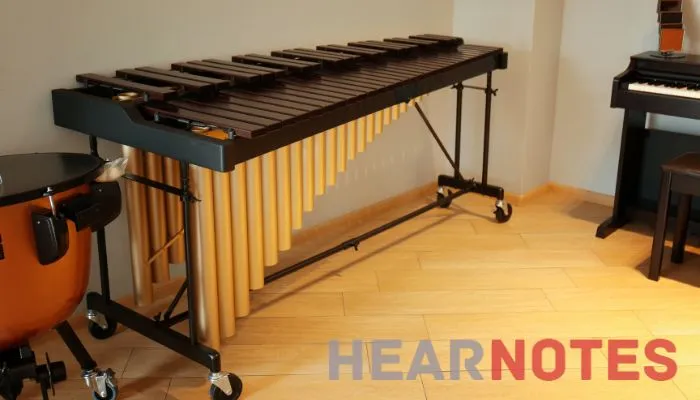Are you a fan of percussion instruments or have an ear for unique sounds? If yes, then you must have come across the melodic and rhythmic charm of the marimba right? Well to make you understand better about this special instrument, here’s our blog.
In this article, we’ll dive into the world of the marimba. Explore its origins, construction, playing techniques, and the diverse musical traditions it has become a part of. So, let’s begin to know.
What is Marimba: Origins and Construction

The marimba is a fascinating instrument that has captivated audiences with its enchanting tones and captivating performances. It has its roots in Africa and has a rich history dating back centuries.
It is believed to have originated from the balafon, an ancient West African xylophone-like instrument. But over time, the marimba evolved and spread to different parts of the world, especially Central and South America.
The construction of a marimba involves several key components. It consists of wooden bars of varying lengths, usually made from rosewood or synthetic materials, arranged in order of pitch. These bars are attached to a frame, made of wood or metal, creating a resonating chamber. Beneath each bar, there are resonators or tubes to amplify the sound.
The marimba is played using mallets, typically made of wood or synthetic materials, which produce different tones based on the striking technique.
Playing the Marimba: Techniques and Musical Expressions
Playing the marimba requires skill, precision, and a deep understanding of musical expression. The player strikes the bars with mallets, producing distinct tones and timbres. The technique involves a combination of striking the bars directly, as well as utilizing various damping and rolling techniques to create different articulations and effects.
You can play marimba both as a solo instrument and in ensemble settings due to its versatility. It can be found in a wide range of musical genres, including classical, jazz, folk, and contemporary music. From virtuosic solos to intricate ensemble performances, this melodious instrument adds a unique and vibrant element to any musical composition.
Diverse Musical Traditions and Global Influence
The marimba earned a rhythmic place in various cultural and musical traditions around the world. In Central and South America, particularly in countries like Guatemala and Mexico, the instrument holds great cultural significance. Moreover, it is an integral part of traditional folk music and is often featured in celebrations, festivals, and social gatherings.
In contemporary Western music, the marimba gained popularity in classical compositions. People love its expressive qualities and wide tonal range. Many renowned composers also incorporated marimba into their works, highlighting its versatility.
Conclusion
So, now you know what is marimba, its journey, and its influences as a percussion instrument.
It is a fascinating percussion instrument that has enchanted listeners across different cultures and musical genres. With its origins rooted in Africa, it has traveled through time and continents, leaving a significant impact on the global musical landscape. Its beautiful tones, rhythmic possibilities, and versatility make it a captivating instrument that continues to inspire musicians and captivate audiences worldwide.
So, whenever you encounter the resonant and melodic vibrations of the marimba, take a moment to appreciate and cherish this remarkable instrument.